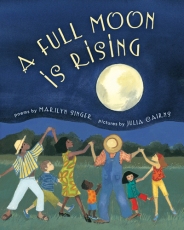 Jaclyn DeForge, our Resident Literacy Expert, began her career teaching first and second grade in the South Bronx, and went on to become a literacy coach and earn her Masters of Science in Teaching. In her column she offers teaching and literacy tips for educators.
Jaclyn DeForge, our Resident Literacy Expert, began her career teaching first and second grade in the South Bronx, and went on to become a literacy coach and earn her Masters of Science in Teaching. In her column she offers teaching and literacy tips for educators.
One aspect of the Common Core that I get asked questions about all the time is thematic text sets. What are they? How do you know which books to use? What types of texts should you be pairing together?
Fear not! I’ve compiled some examples of text sets that cover one topic and span multiple genres and reading levels and over the next few weeks, I’ll be sharing these sets with you. Some of the titles you may already have in your classroom library, and others I think you’ll enjoy discovering.

Theme/topic: The Moon
Grade: 2nd
Informational Text: The Moon Book by Gail Gibbons (Shared Reading)
- provides scientific information about the moon
- can be used to address informational text standards
Nonfiction Poetry: A Full Moon is Rising by Marilyn Singer (Read Aloud)
- provides scientific information about the moon
- provides information regarding moon-related festivals, traditions, holidays, and celebrations
- can be used to address informational text and literature standards
Realistic Fiction: Owl Moon by Jane Yolen (Guided Reading)
- the moon plays a central role in the setting of the story
- can be used to address literature standards
Realistic Fiction: Surprise Moon by Caroline Hatton (Independent Reading)
- discusses celebrations and festivals related to the moon
- can be used to address literature standards

from A Full Moon is Rising
What books would you put on this list? Add your favorites in the comments!
Filed under:
Curriculum Corner,
Resources Tagged:
A Full Moon is Rising,
Book Lists,
Caroline Hatton,
common core standards,
common core text sets,
fiction,
Gail Gibbons,
guided reading,
independent reading,
informational text,
Jane Yolen,
literacy tips,
Marilyn Singer,
Nonfiction poetry,
Owl Moon,
Read Aloud,
Reading Aloud,
reading comprehension,
realistic fiction,
shared reading,
Surprise Moon,
text sets,
The Moon Book 

Parents can involve their children while reading books aloud. There's so much more to a book than the words on the page. Children like to talk, share, and ask questions. When you let your kids help with reading a book, it becomes much better than without their help.
Yes, it can be difficult to let this happen when you have more than one child trying to share, or you have limited time. I
Beginning readers should be read to often. A great way to get beginning readers interested in reading is to share read some books. Ask a beginning reader to jump in and read parts when he or she feels comfortable. Encourage a beginning reader to ask questions, talk about the story and pictures, and even share how a book is similar to another book or something that happened in his or her
 I’m reading A Christmas Carol with my son.
I’m reading A Christmas Carol with my son.
He’s nine. I’m sure he’s not understanding half of it. Every now and then, when I read a bit that seems particularly difficult, I check with him to see if he’s got it; and usually he hasn’t, so I explain it to him.
And yet, he’s transfixed. He’s loving it. I’m reading half a chapter at a time - there are only five - and he’s with me all the way.
I think there are two reasons for this. Or, perhaps, three; but I’ll come to the third in a minute.
Reason number one: Scrooge. Was there ever a more disagreeable, yet more sympathetic, old sinner anywhere in all of fiction? From the start, we begin to know him even as we disapprove. And we laugh, too; my son’s first response, when I asked if he was enjoying it, was: “He’s funny.” Yet we understand him, and when - actually very quickly - he begins to feel again, we can believe in his reawakened feelings, and feel for him.
Reason number two: The language. Words can be like music, and you don’t always need to “understand” music to appreciate it. I’m convinced one of the reasons my boy isn’t getting bored and wandering off is that, quite simply, the words make a nice sound. To be honest, there are sentences I don’t entirely understand myself, but they’re great to read aloud.
So there you have it; in less than 150 words, my thoughts on why Dickens can be appreciated by a nine-year-old.
But what about reason three? Ah. Well. That one, I think, has less to do with Dickens, and more to do with me and my son.
You see, I’ve been building up to this for a couple of weeks: telling my boy that I want to read this book with him this year, and that I think he’s old enough for it. For both of us, I think, this particular story has become one of those special father-and-son events, imbued with a magic that neither of us wants to risk breaking. It’s attained something of the significance of a rite of passage; and so, it’s made us want to work at it. It may be difficult at times, but it’s worth the effort - both for what the story reveals, and for what it says about our relationship.
And, of course, it’s Christmas; and for many of us - me included - Christmas is a magical time; and the magic of this Christmas has become part of the magic of this shared story about a magical Christmas.
Time will tell - it’ll be interesting to see if he wants this story again next year - but I hope that when he’s grown, my son will remember the first time his dad read him A Christmas Carol, and will remember it with affection, as one of those many wonderful times when a story was more than just words.
Have a very merry Christmas, Awfully Big Readers, and - in the words of Tiny Tim - God bless us, every one!
John's website is at www.visitingauthor.com. His latest book is Jack Slater and the Whisper of Doom.
 Jaclyn DeForge, our Resident Literacy Expert, began her career teaching first and second grade in the South Bronx, and went on to become a literacy coach and earn her Masters of Science in Teaching. In her column she offers teaching and literacy tips for educators.
Jaclyn DeForge, our Resident Literacy Expert, began her career teaching first and second grade in the South Bronx, and went on to become a literacy coach and earn her Masters of Science in Teaching. In her column she offers teaching and literacy tips for educators.





My daughter loves shared reading. We read together to the dog! :) She especially loves to read Wacky Wednesday -- I'm amazed that she still likes to "look for" all the wacky things. Repetition is a good thing :D
My son also reads to the dog! He also reads to his little sister, which is adorable. It is cute and purposeful. :) His favorite is Brown Bear because he has it memorized.